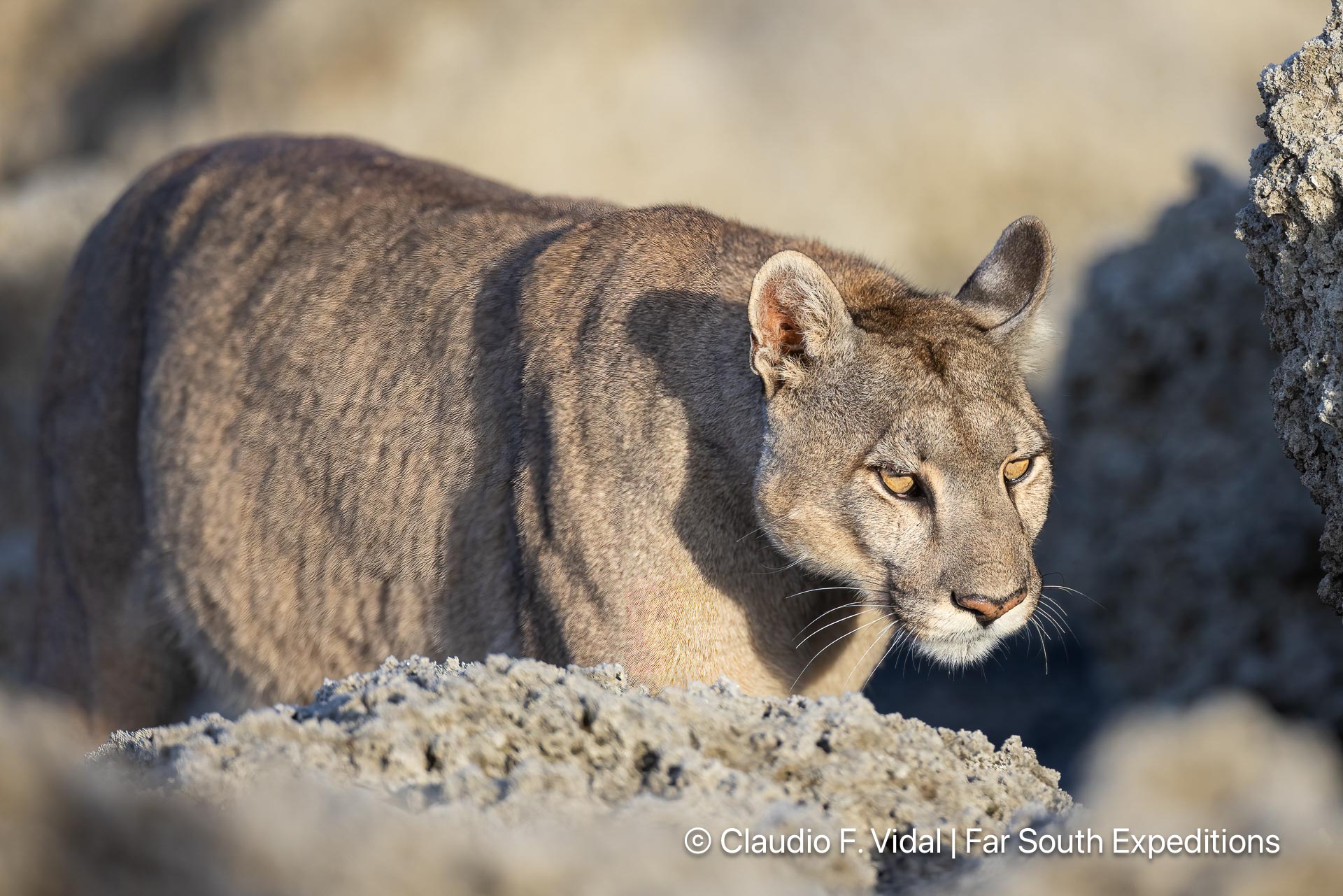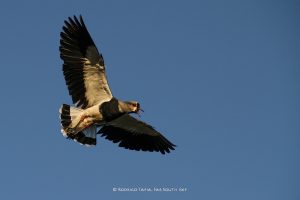The Patagonia Photo Expedition is a unique tour that invites travelers to explore the vast and impressive beauty of Patagonia, from the expansive steppe to the imposing glaciers. Today, we want to share some of the most unforgettable moments experienced by tourists during this fascinating expedition.
Traveling through Patagonia means entering a world full of natural contrasts and surprising diversity. Recently, Susanne Widmer, an expedition guide from Far South Expeditions, led the Patagonia Photo Expedition tour, designed specifically for photography enthusiasts. According to her this trip combined unforgettable moments of wildlife observation and learning about the diverse ecosystems.
The Animals: Stars of Exciting Moments
Patagonia, with its extreme climate variations, is a refuge for an impressive diversity of species. Even though the tour wasn’t a dedicated photo safari, it were probably the animals which generated the most intense and expressive emotions among the guest. The group could observe species that are not only representative of Patagonia but also play a key role in the region’s natural balance.
The animals that stood out during the expedition:
Lesser Rhea: This large, flightless bird is a symbol of the region, known for its ability to run at high speeds.
South American Gray Fox: In one of the most exciting observations, the group observed a mother fox accompanied by her three cubs.
Penguins: King and Magellanic penguins were observed. They provided a unique opportunity to appreciate the penguin’s fascinating behaviors.
Albatrosses: These large seabirds are expert gliders, capable of traveling long distances with barely a flap of their wings.
Puma: The sighting of a puma, Patagonia’s great feline, was one of the most surprising moments of the expedition.
Guanacos: The largest terrestrial mammal in Chile and one of the four native camelid species of South America.
The small group size allowed the expedition guide to have the flexibility to make the most of every moment, stopping at strategic locations to observe wildlife without disturbing them. This ensured a respectful and enriching experience.
The Diversity of Patagonia’s Landscapes and Geography
Patagonia boasts a fascinating landscape that varies dramatically from one corner to another. From the arid steppe of Pali Aike, where vast dry landscapes and constant winds dominate the surroundings, to the imposing glaciers and forests of Torres del Paine, each place has its own character.
The steppe, with its resilient vegetation such as dwarf shrubs and perennial grass species, is home to fauna adapted to the harsh conditions, like guanacos and condors soaring in the skies. In this place, we find Pali Aike, known for its vast volcanic field, with landscapes dominated by basaltic lava and scattered cones dating back to eruptions that occurred thousands of years ago, the latest between 16,000 and 10,000 years ago, which created the Morada del Diablo crater.
South of Pali Aike, the Strait of Magellan stretches between the mainland and the large island of Tierra del Fuego. In this part of the world, Magdalena Island is a key refuge for Magellanic penguins, a sanctuary where thousands of penguins nest every year. The earliest record of penguins on this island was documented by Antonio Pigafetta during Ferdinand Magellan’s expedition in 1520.
Further north, the Torres del Paine National Park, one of Patagonia’s most iconic destinations, stands out for its impressive combination of mountains, glaciers, lakes, and Nothofagus forests, mainly composed by nirre, coigue and lenga. One of the most fascinating aspects of its landscape is the geological phenomenon that gave rise to the Torres del Paine massif. After millions of years buried deep within the Earth’s crust and due to a series of tectonic movements, this large group of rocks was lifted more than 2,000 meters above sea level. Much later, during the Pleistocene, between 12,000 and 17,000 years ago, glaciers covered the area and sculpted the rocks (clear igneous rocks and dark sedimentary rocks), creating unique formations. The action of the ice, wind, surface water bodies and precipitation shaped this landscape over thousands of years, making it a unique place in the world.
The Grey Glacier: A Natural Spectacle
One of the highlights of the Patagonia Photo Expedition was the visit to the Grey Glacier, one of the main attractions of Torres del Paine National Park in Chilean Patagonia. It is a glacier that is part of the Southern Patagonian Ice Field, the second-largest continental ice system in the South Hemisphere, after Antarctica, and a remnant of the Patagonian ice sheet from the last glacial period. Tourists were captivated by its magnitude and the various shades of blue and white it displays. This is one of the most photographed natural wonders in the region.















Leave a Reply
Your email is safe with us.